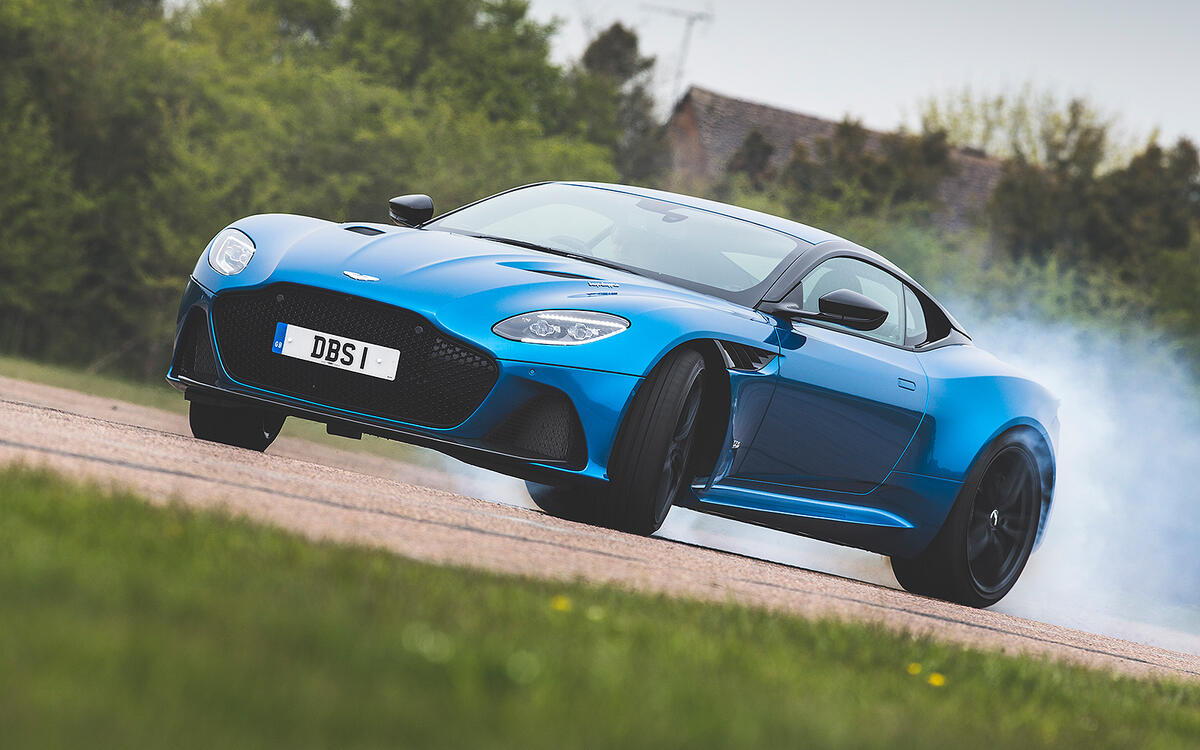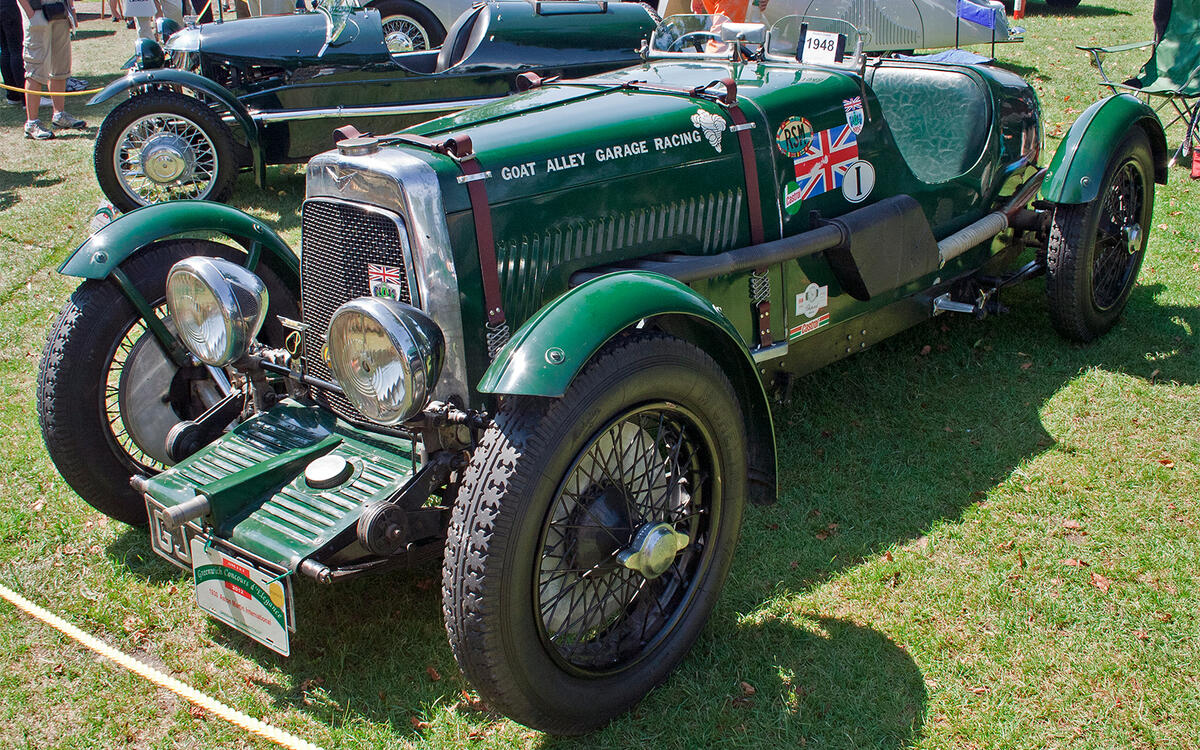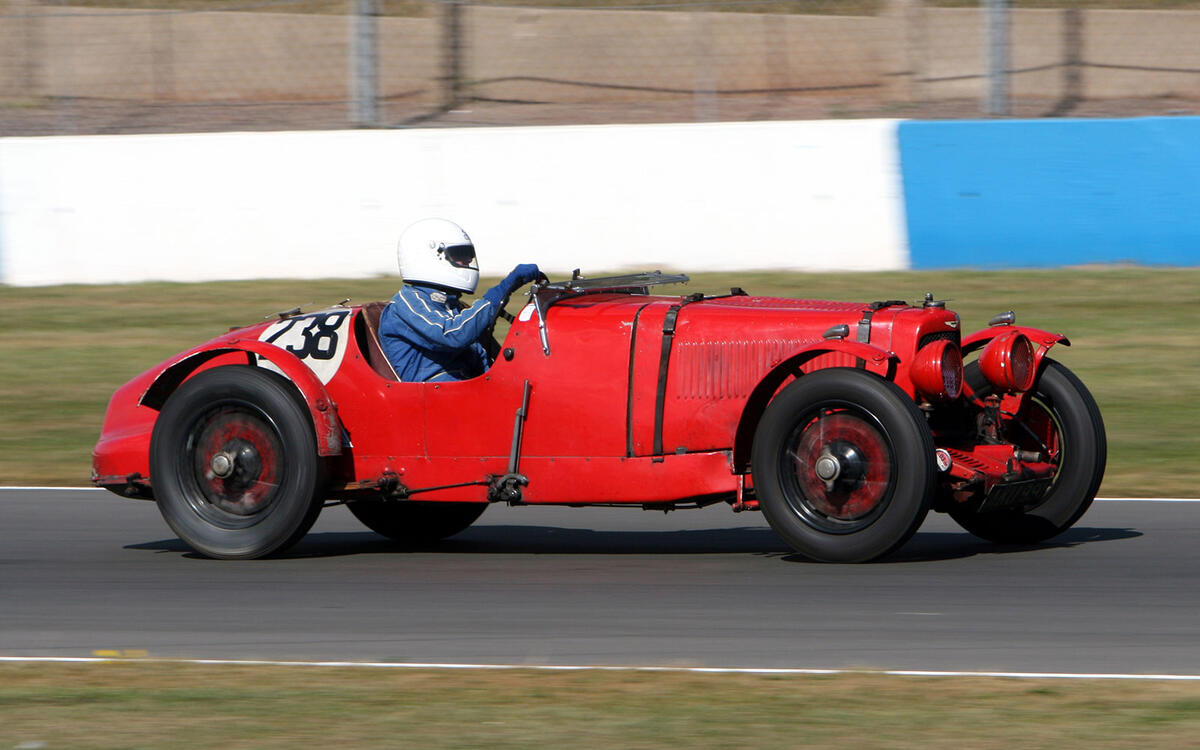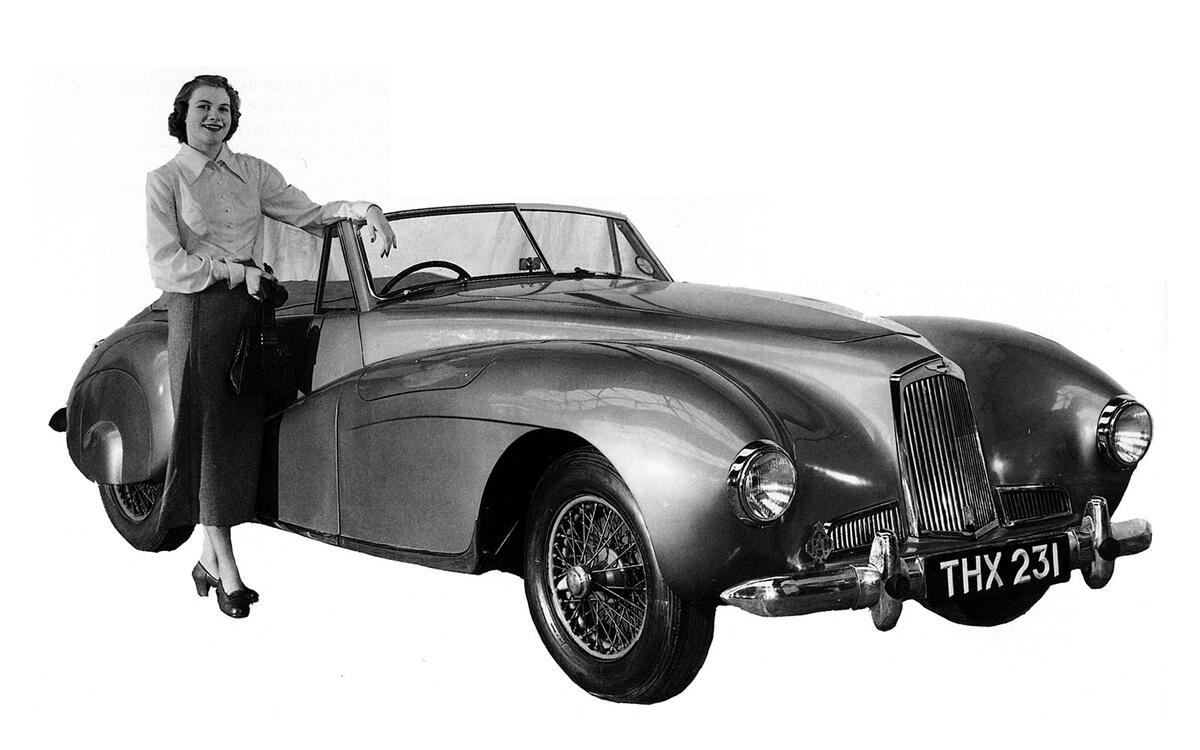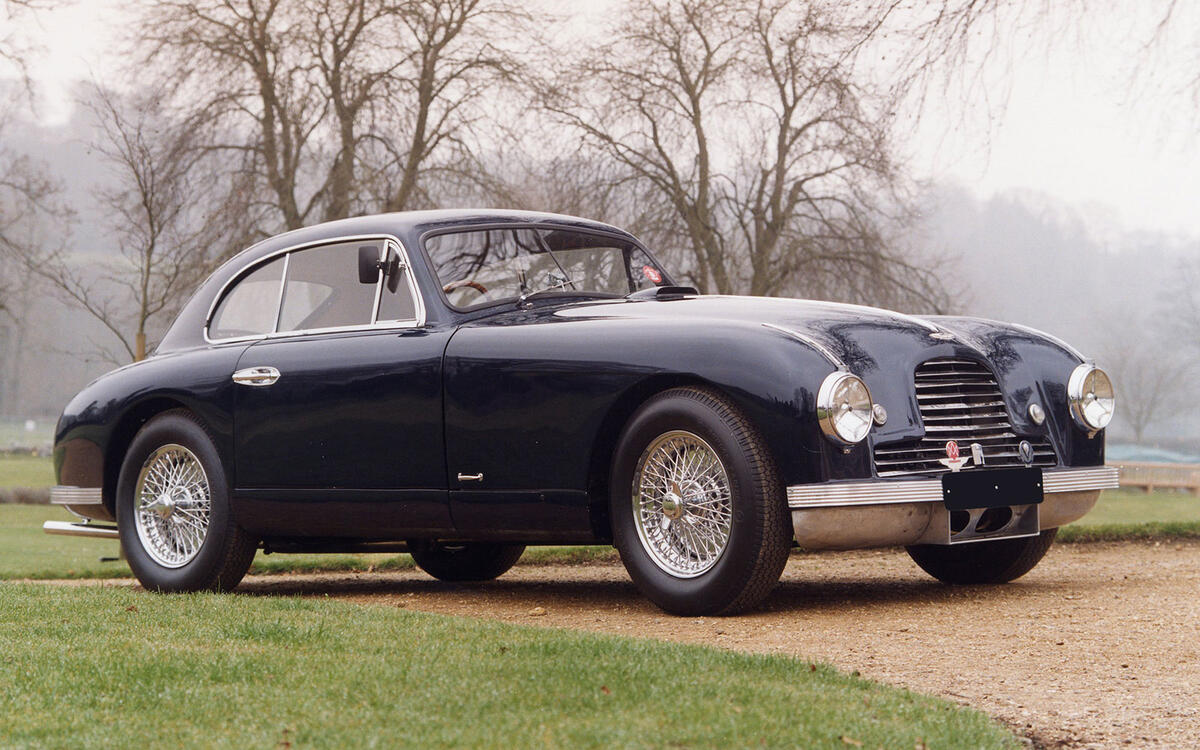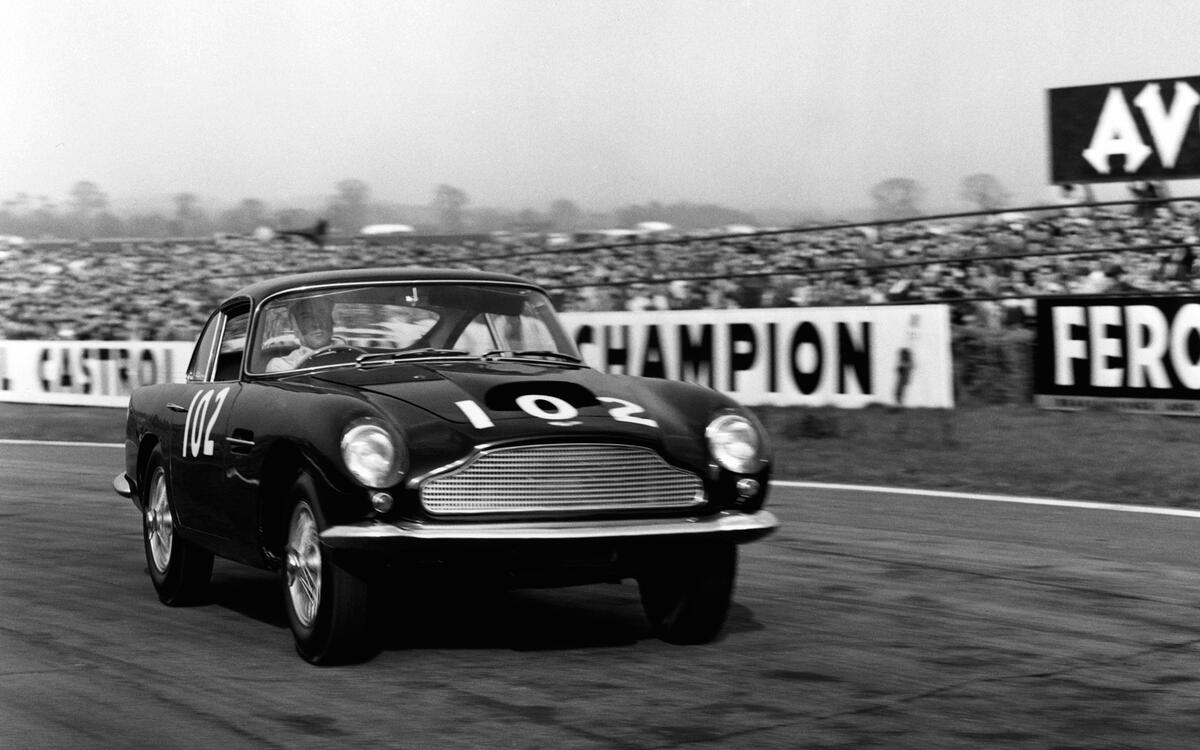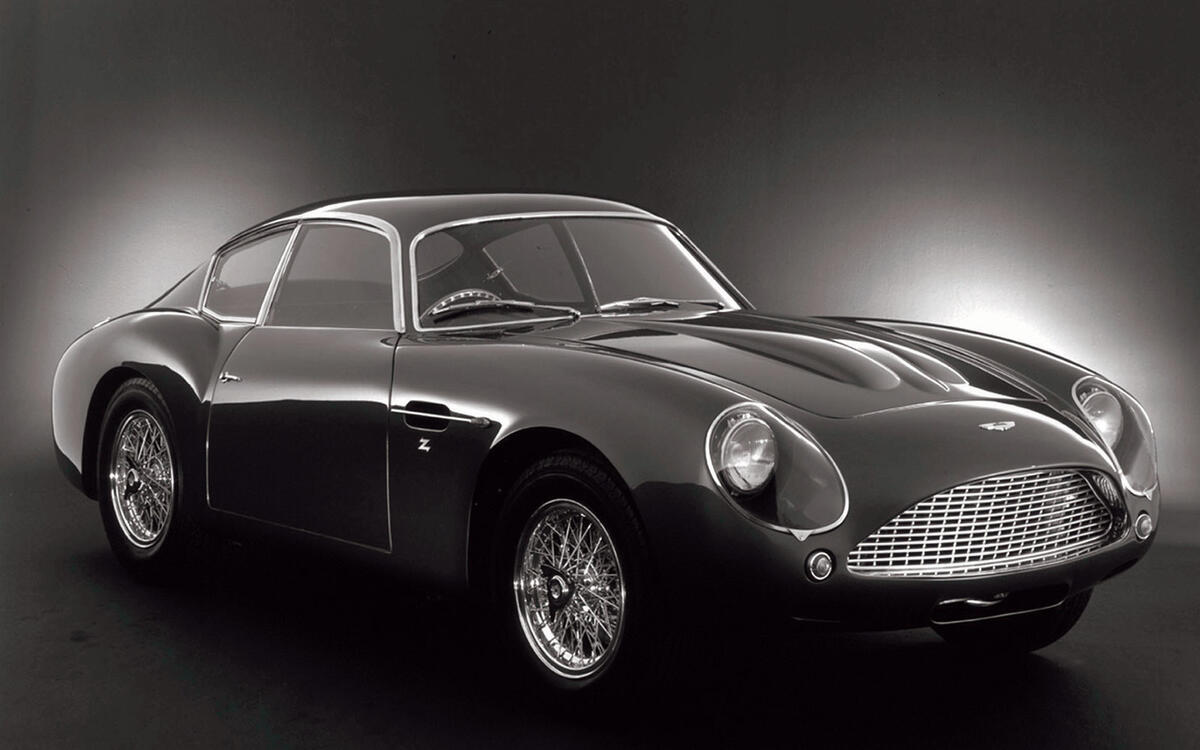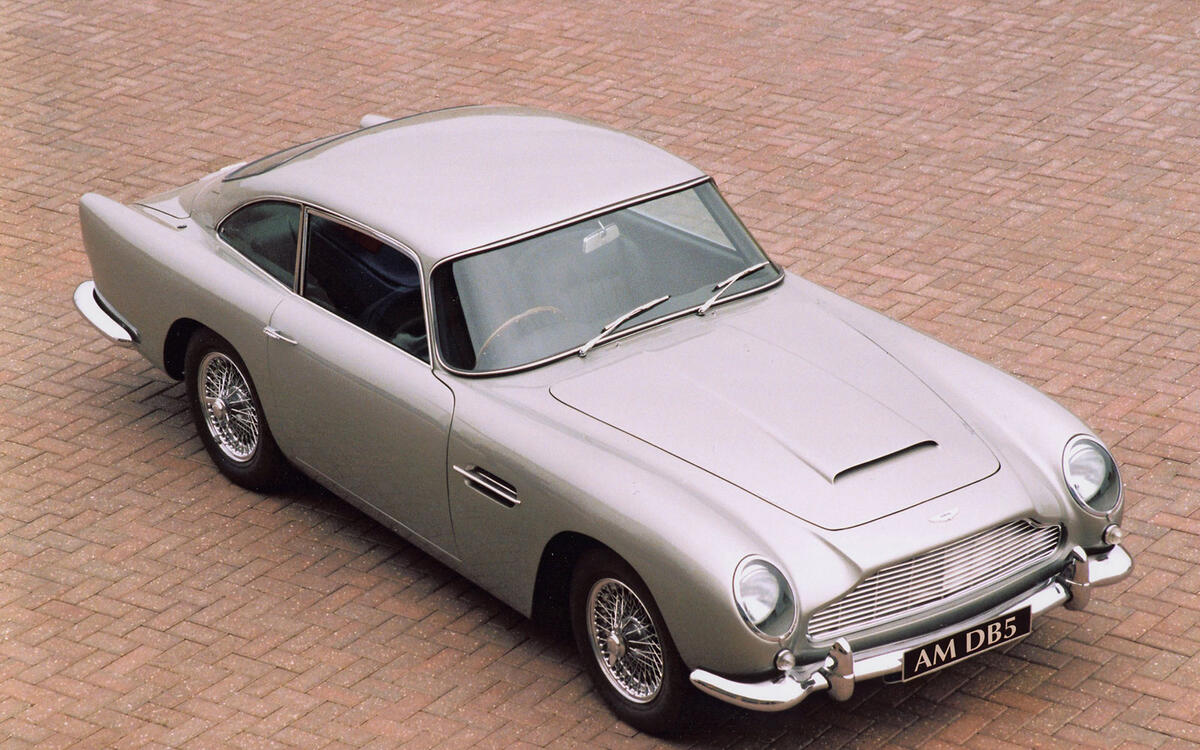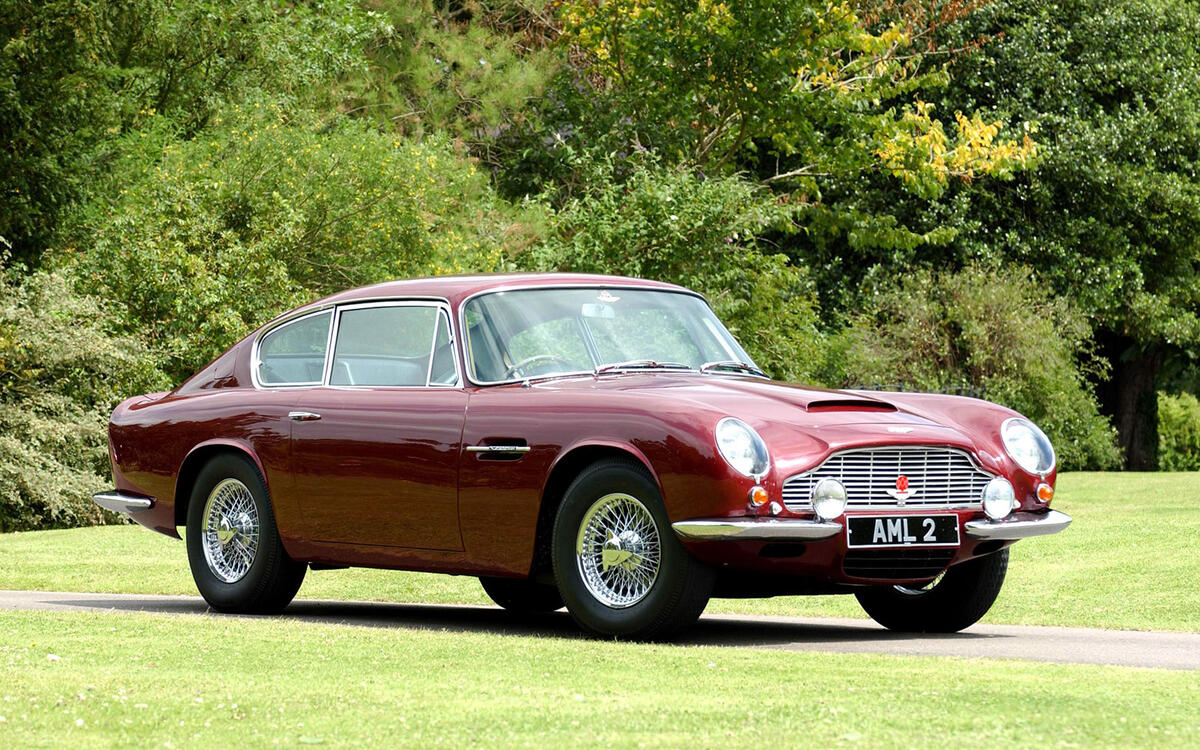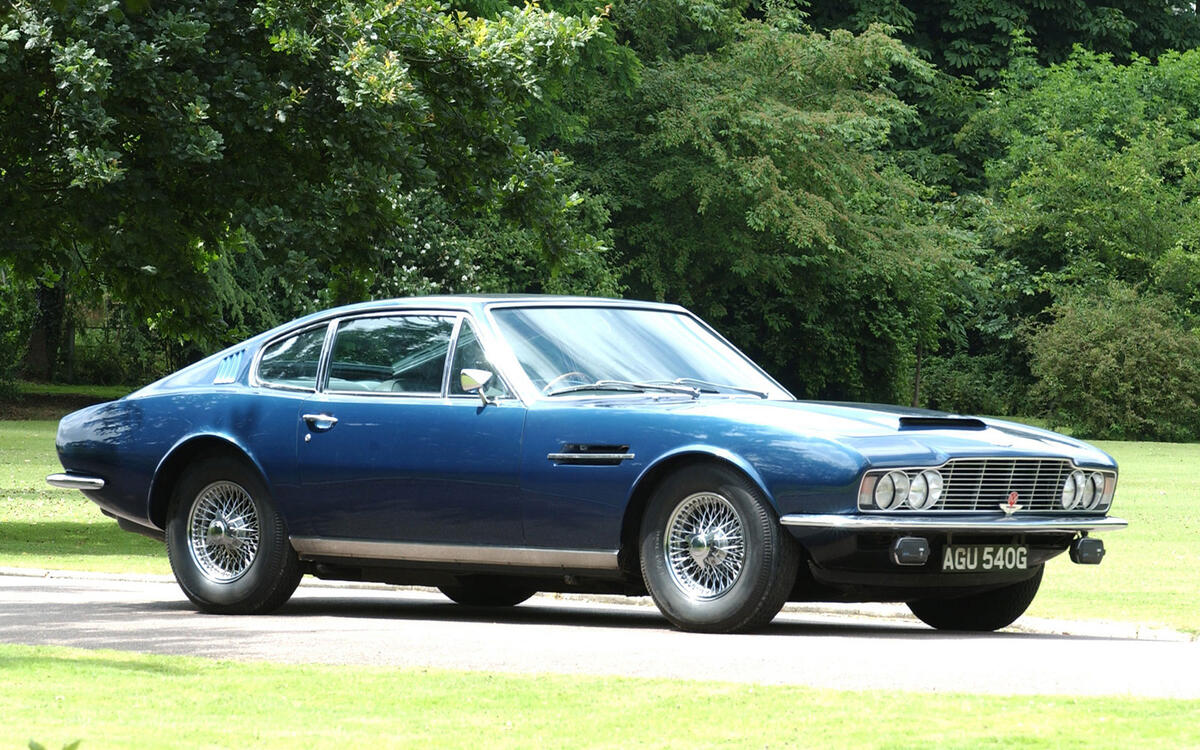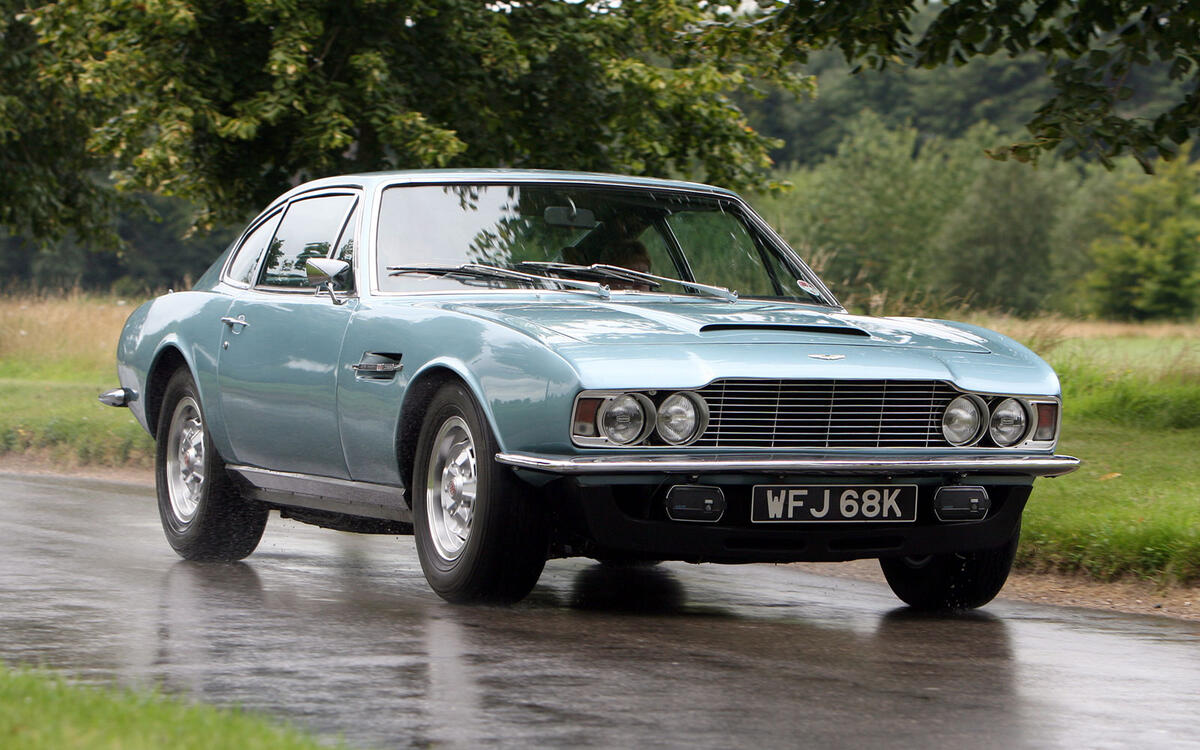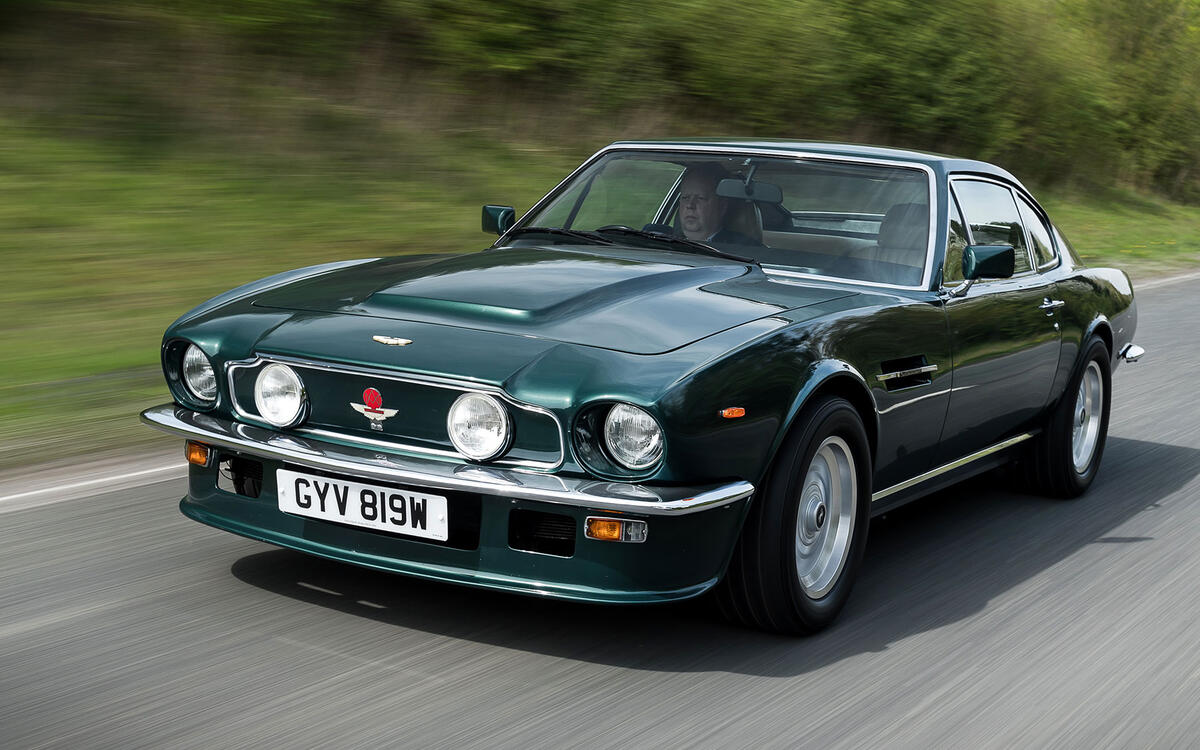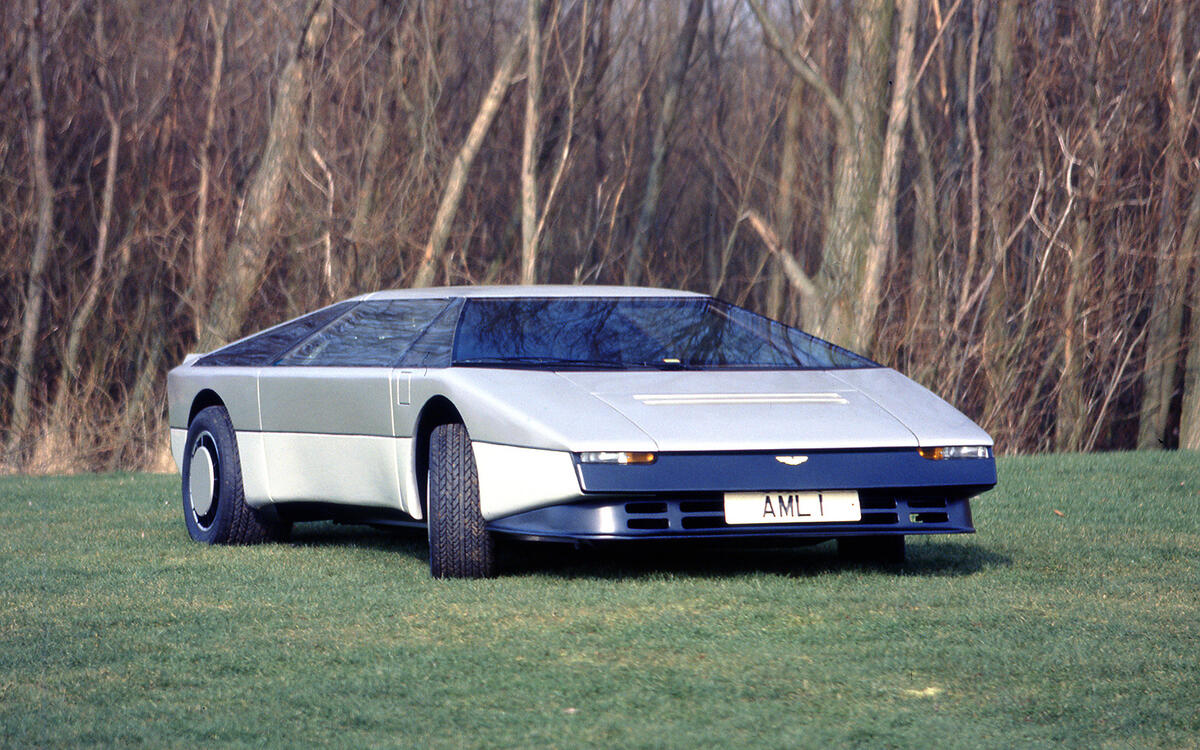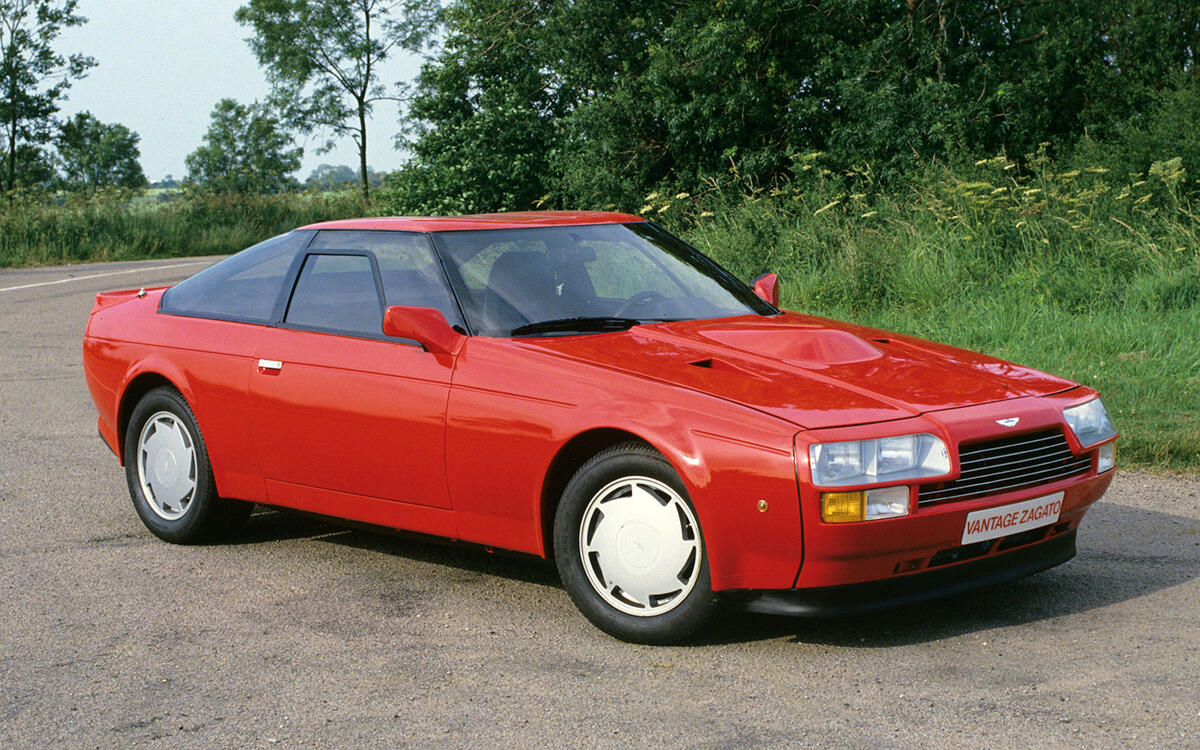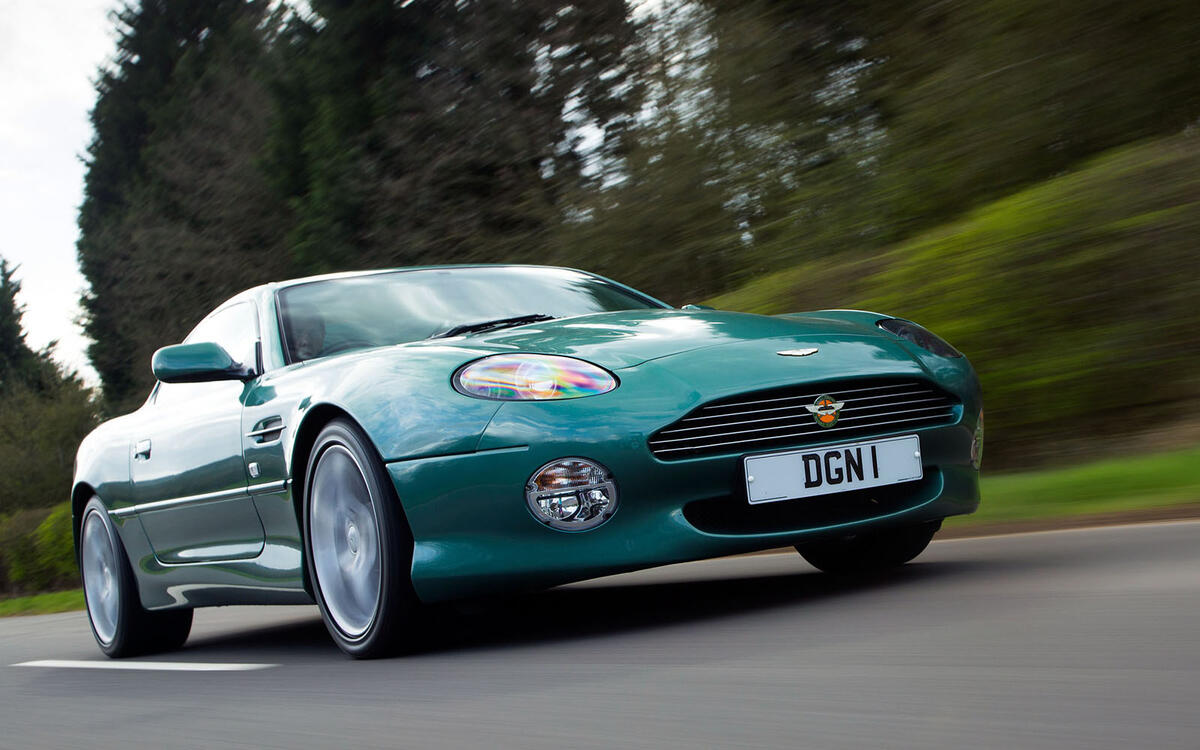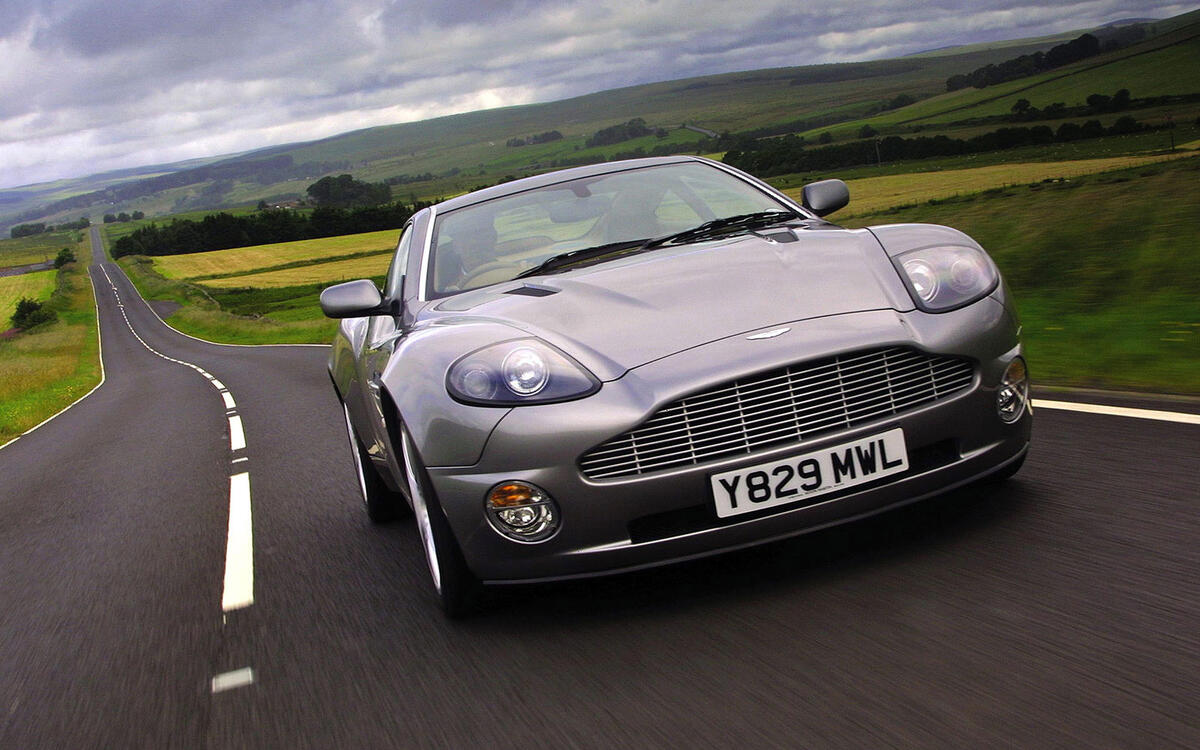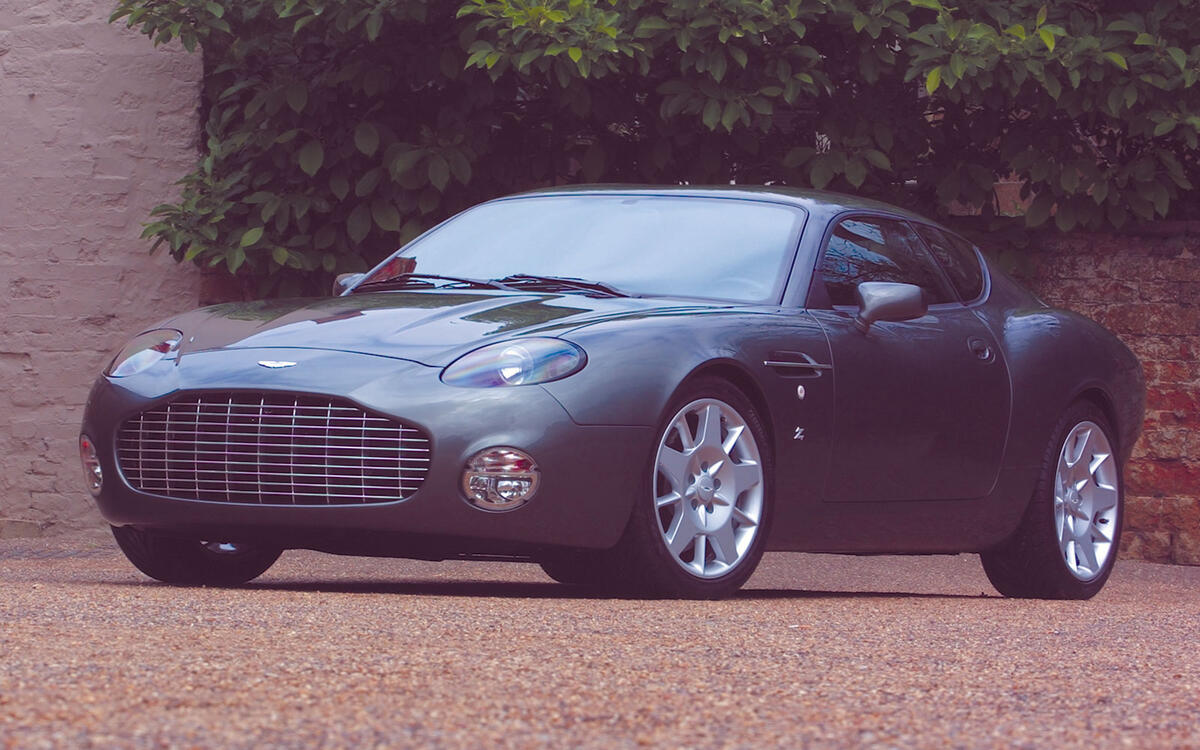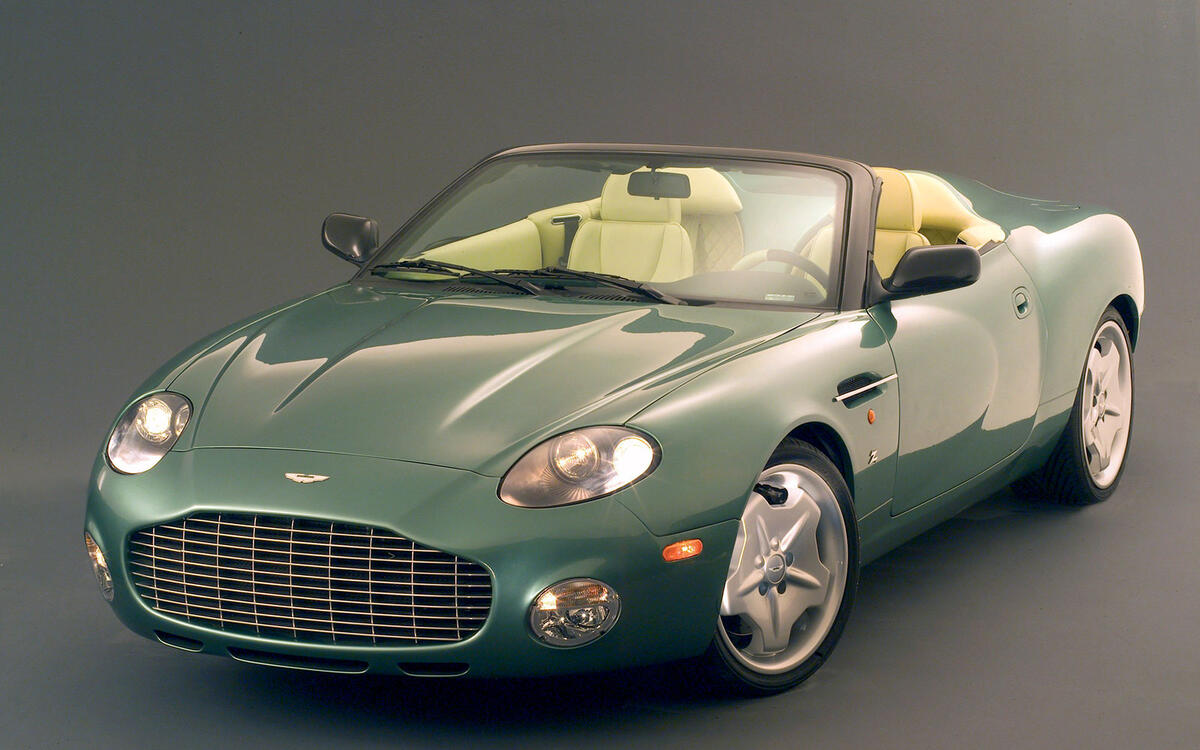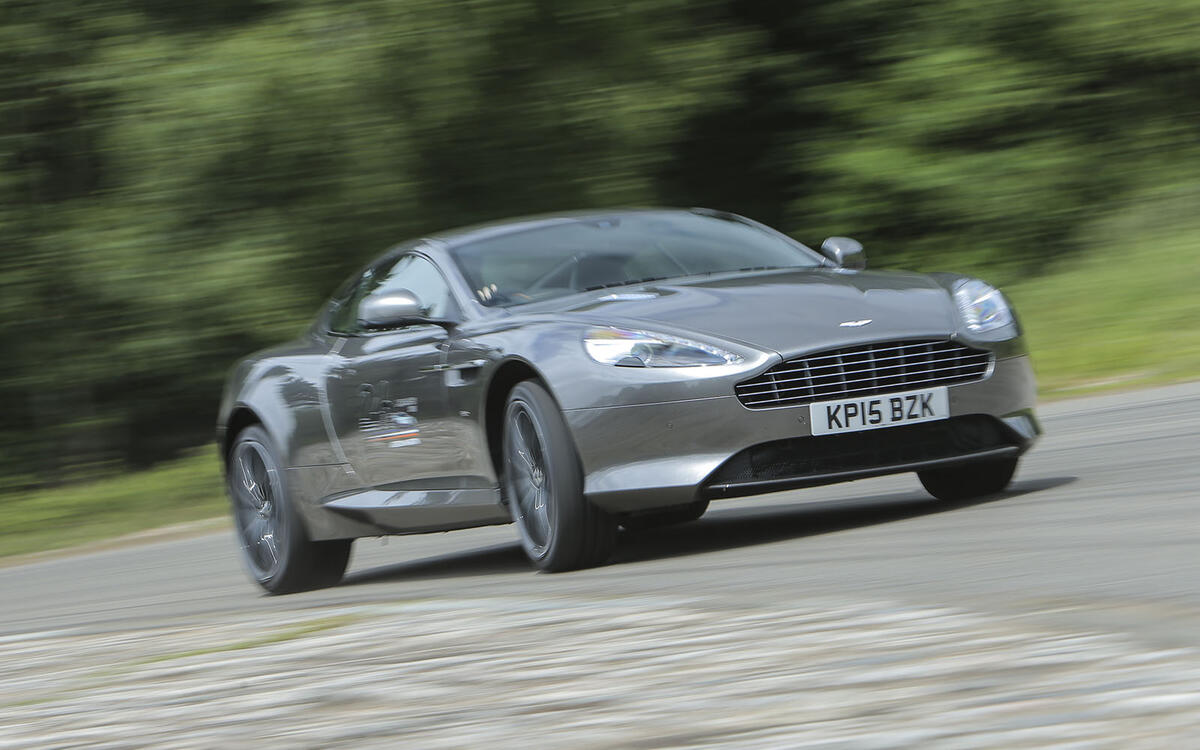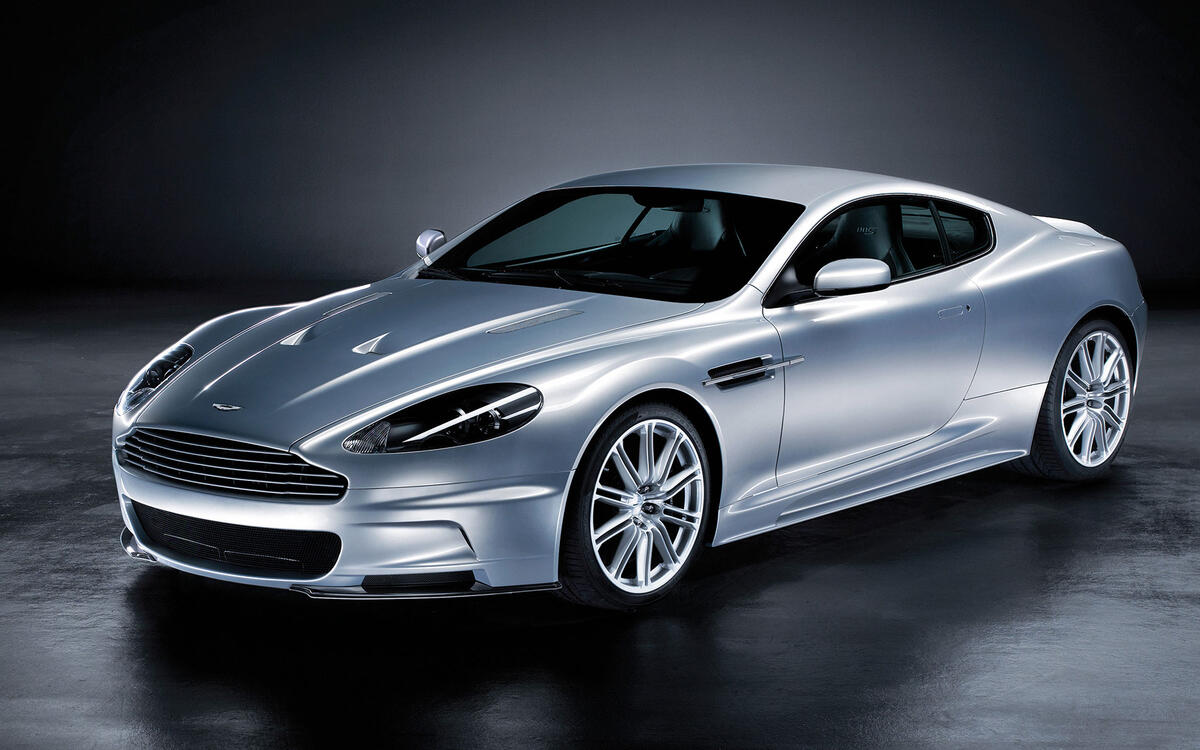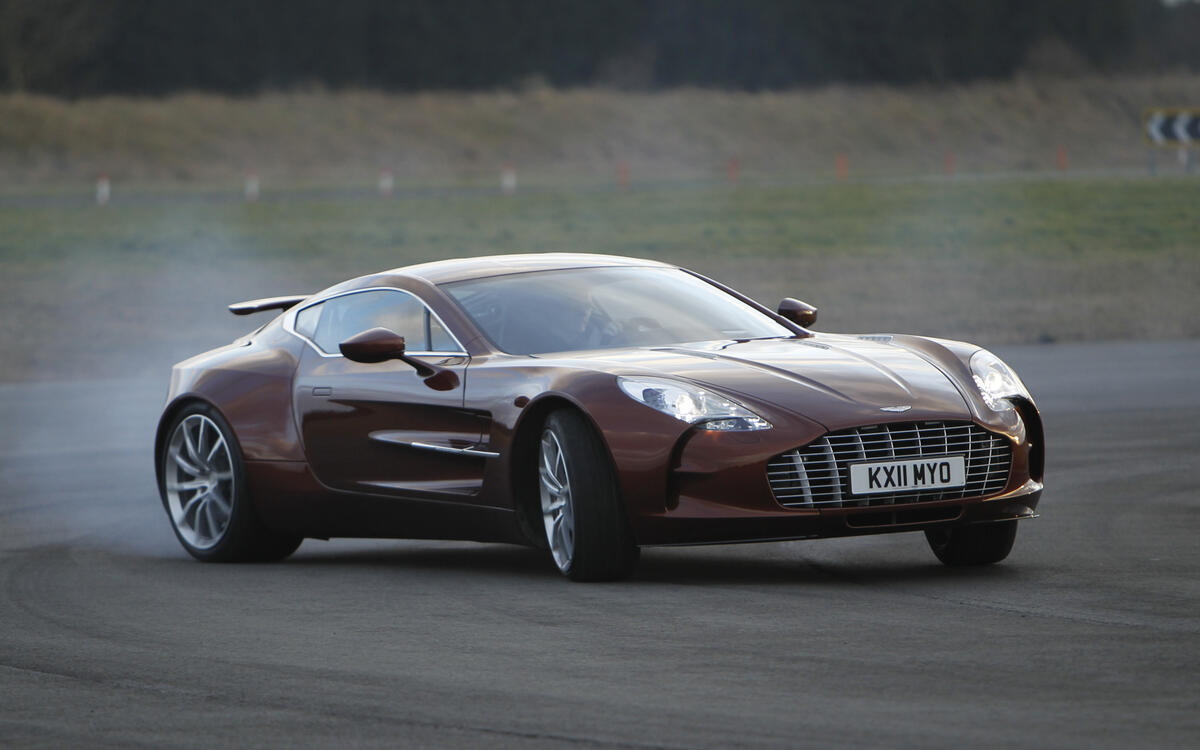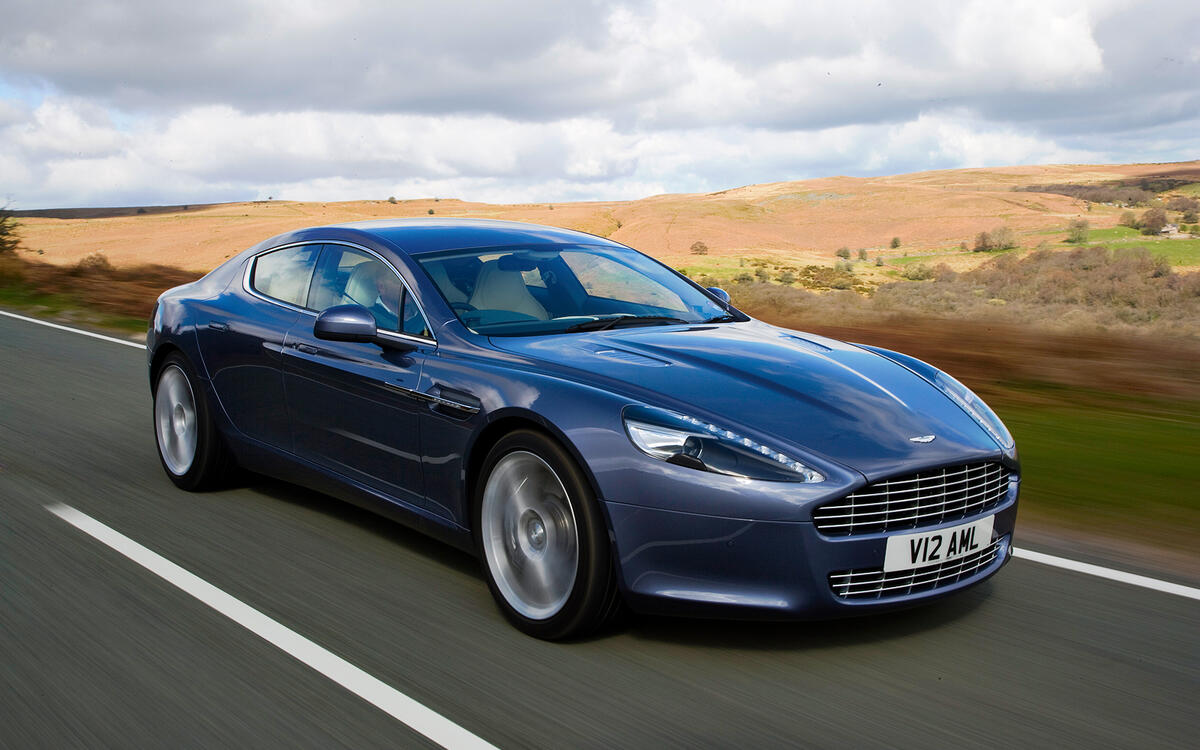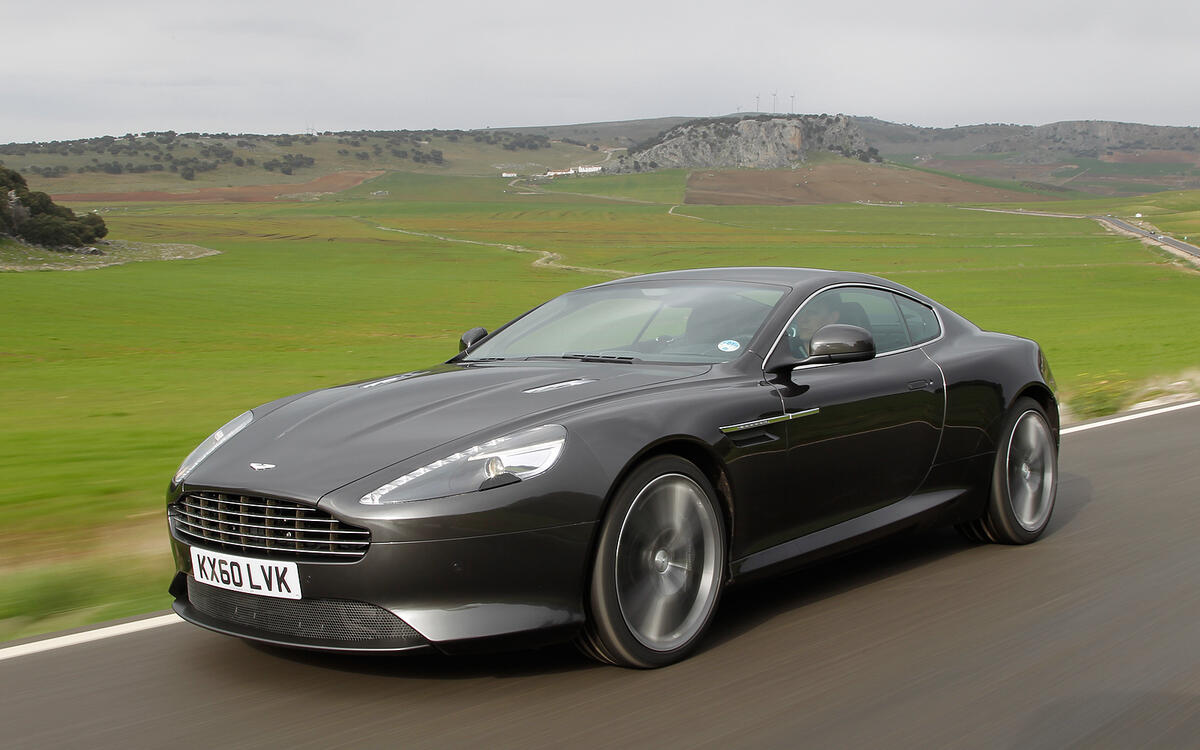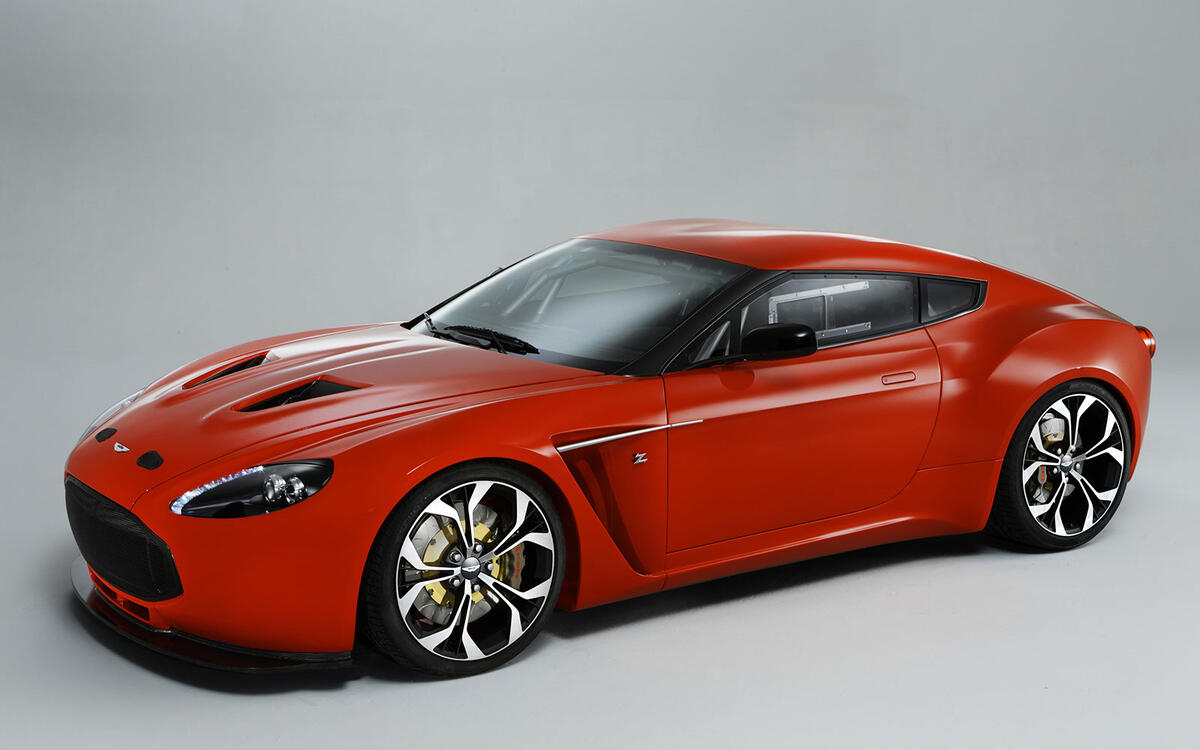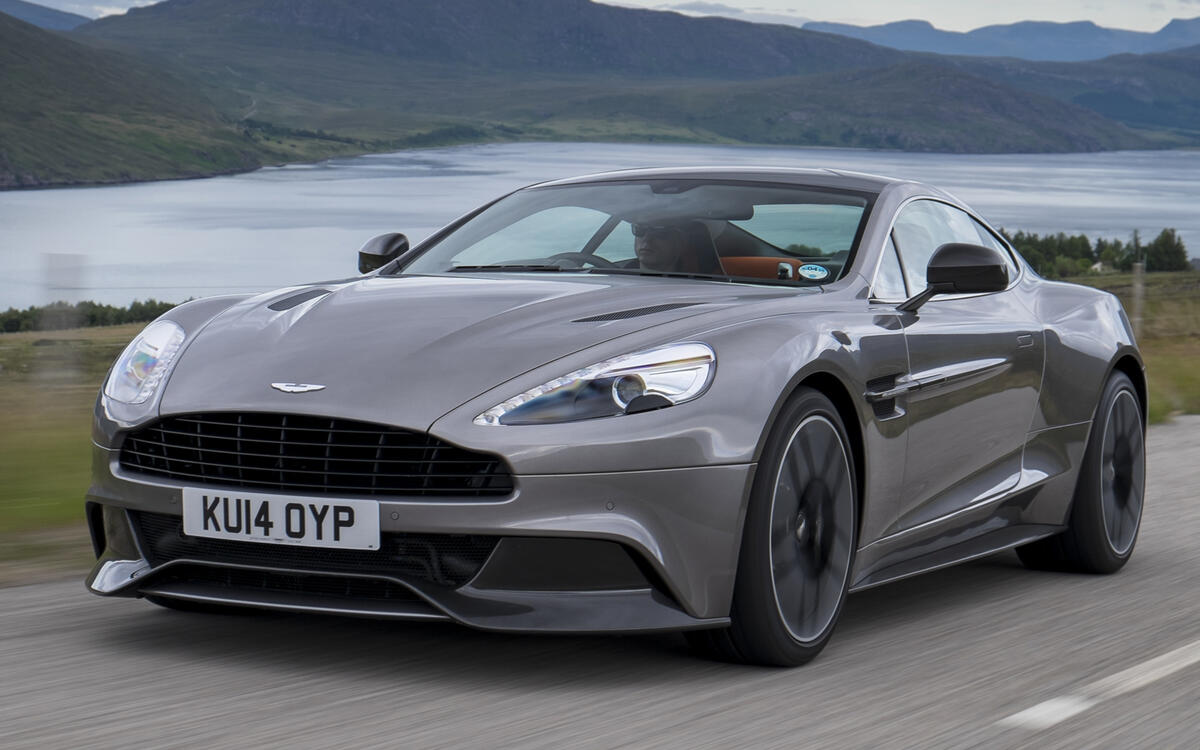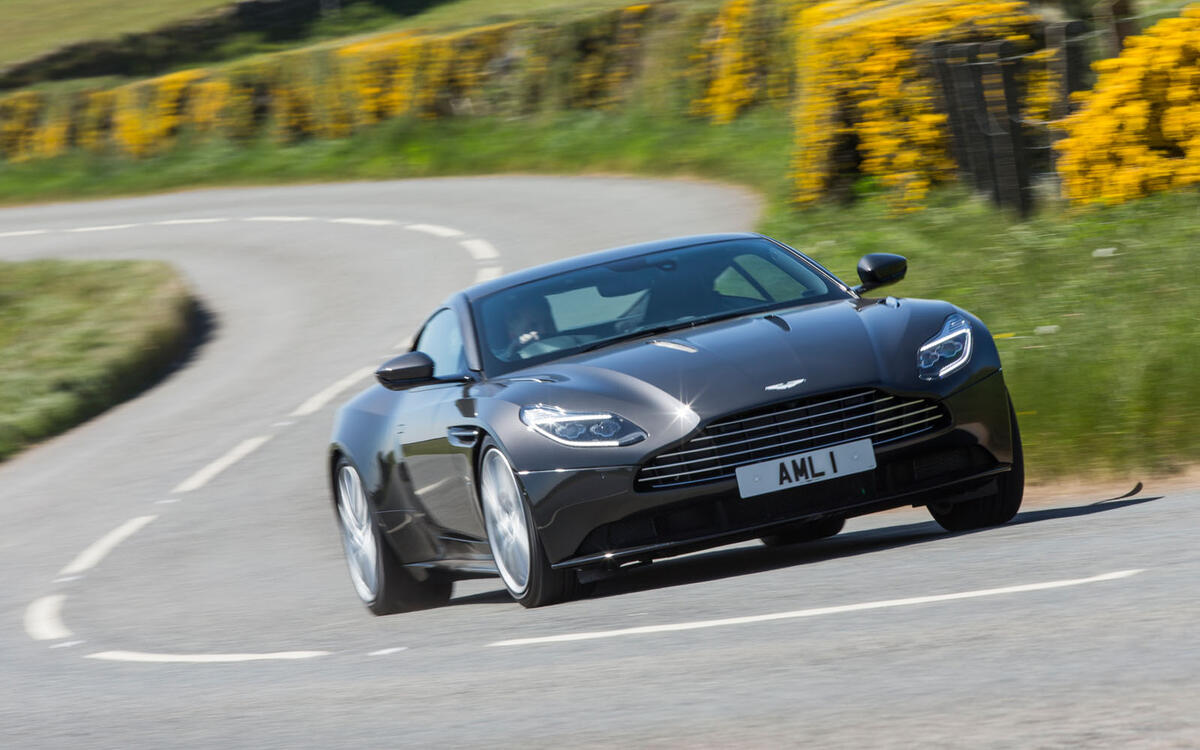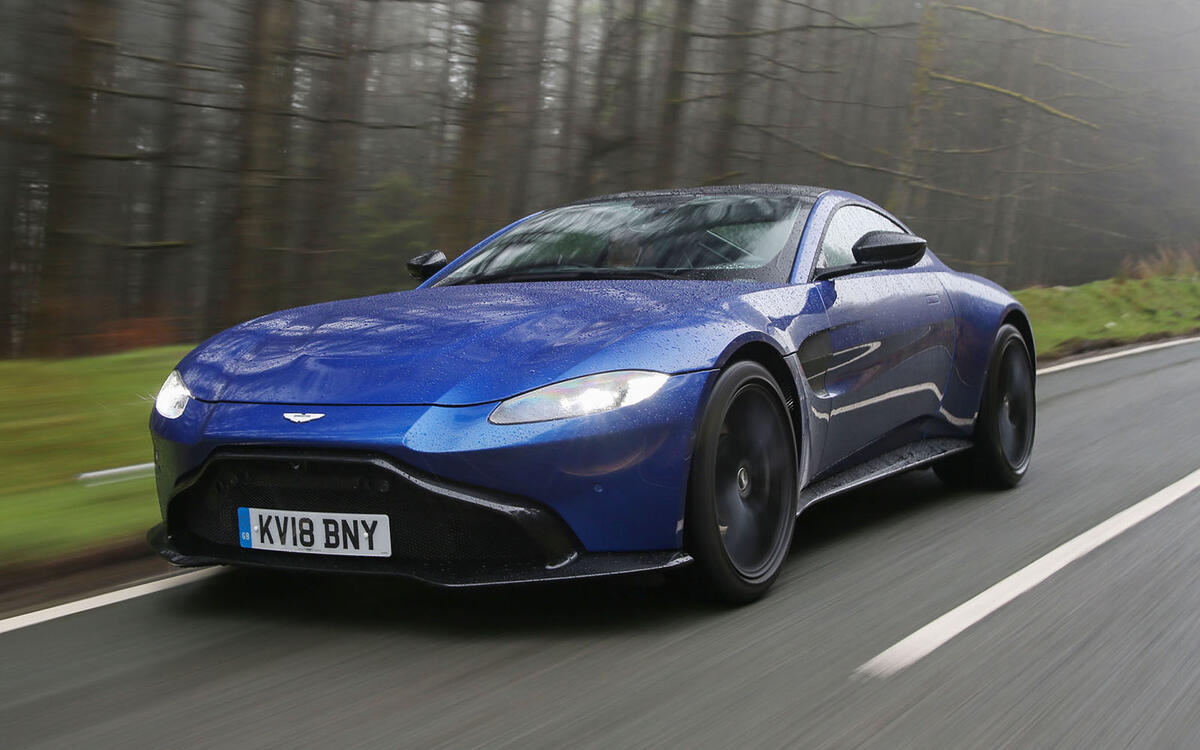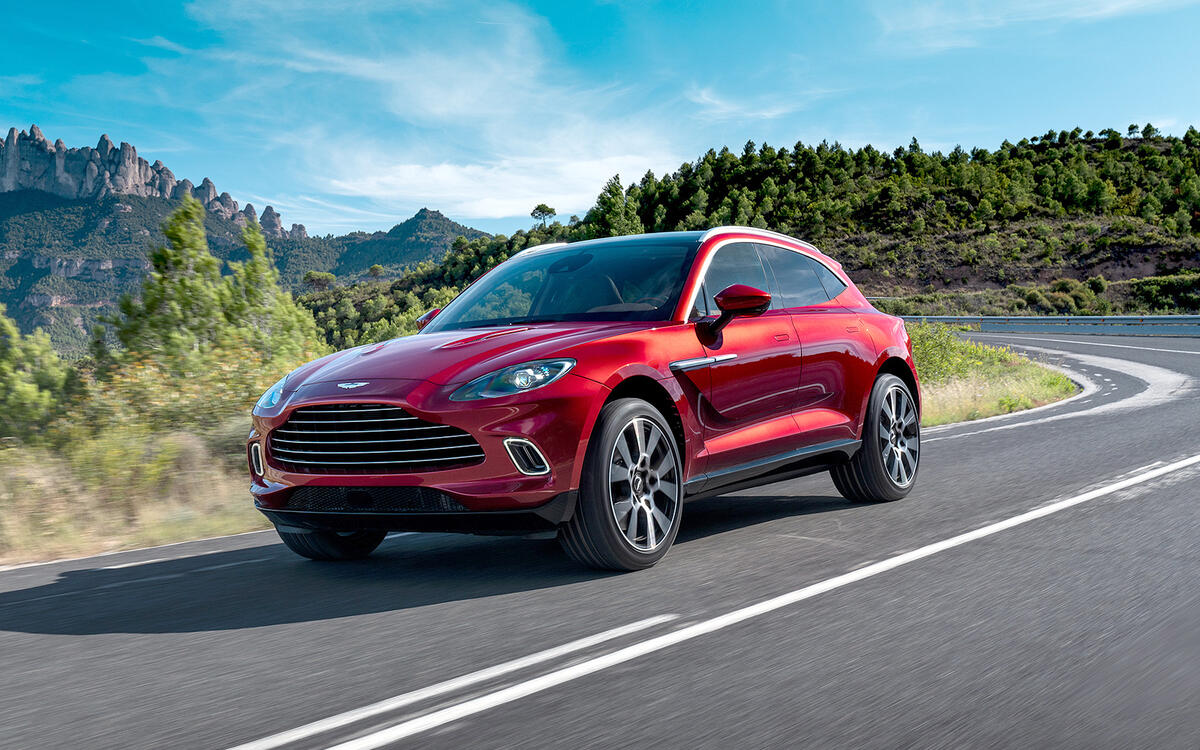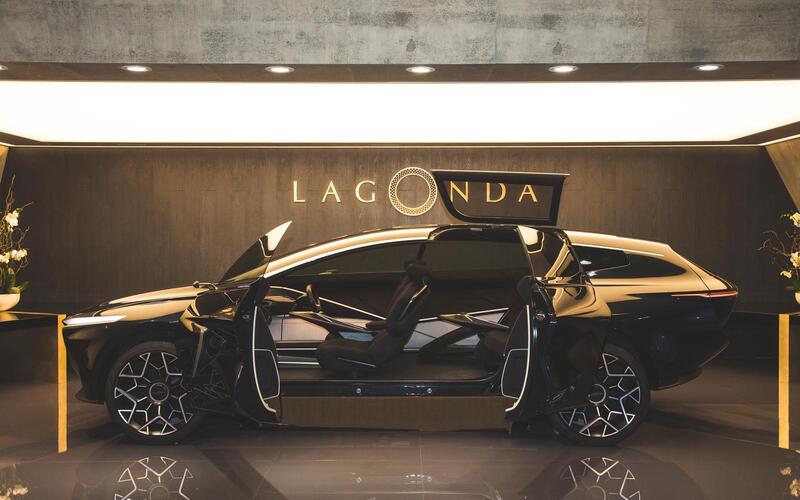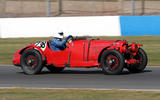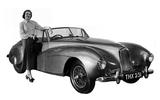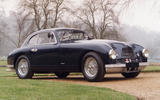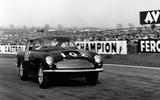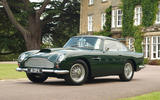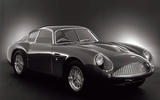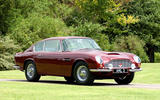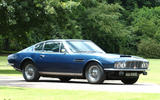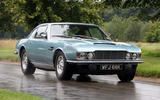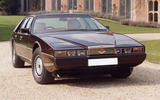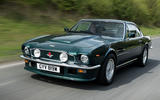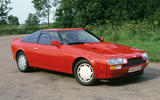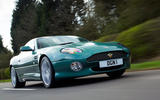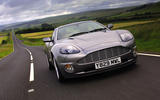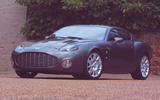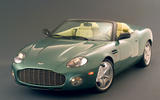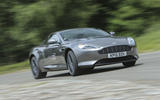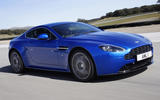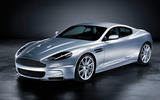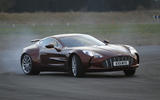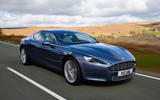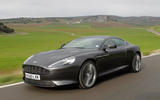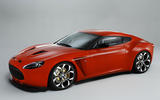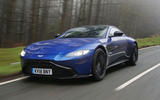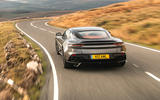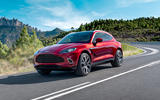 Slide of
Slide of
Aston Martin is heading in a new direction.
After years of making powerful, svelte grand touring cars, the wraps have been removed from its new DBX model. Yes, even Aston Martin couldn’t ignore the fast-expanding luxury SUV market. The new car will feature a Mercedes AMG-sourced twin-turbocharged 4.0-litre V8, producing around 503bhp.
Built in a new factory in south Wales, it’s one of the most important cars in the company’s history and a key plank in its aim to boost annual production to 14,000 cars, up from 6441 in 2018.
The new car has some serious shoes to fill; time, then, to take a look at the greatest Aston Martins ever made:
 Slide of
Slide of
Aston Martin International (1929)
By the time the International arrived, Aston Martin had already been through one financial crisis. Produced for just two years, 81 Internationals were built, each fitted with a 1495cc four-cylinder engine. Buyers could choose between two- or four-seater Sports models or there were fixed-head coupé and drophead coupés to choose from too.
 Slide of
Slide of
Aston Martin Ulster (1934)
With its uprated 1.5-litre engine the Ulster could crack the 100mph barrier; quite a feat in the 1930s. but with production totalling all of 24 units it’s no wonder the Ulster is now one of the most sought after pre-war Aston Martins.
 Slide of
Slide of
Aston Martin Two-litre Sports (1948)
Aston’s first post-war model was also the first produced under the company’s new owner, David Brown, which is why it’s retrospectively known as the DB1. Just 15 were made, which wasn’t surprising as the post-war looks clothed pre-war running gear – yet still the DB1 cost a massive £2332 (£84,000 today).
 Slide of
Slide of
Aston Martin DB2 (1950)
The first true David Brown Aston Martin, the DB2 featured an all-new 2.6-litre twin-cam engine designed by WO Bentley.
A facelift in 1953 saw the introduction of a hatchback configuration (and a name change to DB2/4), then in 1957 came the final iteration, the DB MkIII with a 2.9-litre engine in 162bhp or 178bhp forms.
 Slide of
Slide of
Aston Martin DB4 (1958)
The DB4 was fitted with another new twin-cam engine, this time an all-alloy unit designed by Tadek Marek. The complex bodywork was designed by Touring of Milan; for strength with lightness it featured Superleggera (Superlight) construction, with a series of steel tubes over which the bodywork was draped.
Between 1958 and 1963 there were five series of DB4, with production totalling 1113.
 Slide of
Slide of
Aston Martin DB4 GT (1959)
Made in limited numbers for four years, the GT was a short-wheelbase DB4 intended for competition use. It was also more powerful than the regular DB4 (302bhp instead of 240bhp) and featured just two seats. As many as 81 were made, despite a £4,535 price in 1959 (£104,600 in 2019).
 Slide of
Slide of
Aston Martin DB4 GT Zagato (1961)
As if the DB4 GT wasn’t special enough, along came Zagato in 1961 with its own take on this track-focused supercar. The 3670cc engine’s power was upped to 314bhp and there was super-slippery aluminium bodywork. Just 19 were built in period, but four officially blessed ‘Sanction II’ editions were made in the 1990s.
 Slide of
Slide of
Aston Martin DB5 (1963)
Apart from the DB4 GT Zagato, the DB5 is arguably the most collectible and valuable of the various post-war Aston Martins, partly because of its film-star status courtesy of Sean Connery in the Bond flick Goldfinger.
There was now a 4.0-litre straight-six rated at 282bhp, with a 325bhp Vantage version introduced in 1964.
 Slide of
Slide of
Aston Martin DB6 (1965)
The Superleggera construction was ditched and the wheelbase stretched to improve rear seat space; the roof line was raised too. The result of all this was a much more usable car, but one that’s proved less collectible and desirable than its forebears.
The DB6 still looks gorgeous though and it’s fast too; how does 148mph and 0-60mph in 6.5 seconds grab you?
 Slide of
Slide of
Aston Martin DBS 6 (1967)
When the DBS 6 arrived in 1967 it was supposed to have an all-new V8 engine, but this wasn’t ready in time so Aston had to carry over the DB6’s running gear instead. That meant a 4.0-litre straight-six was fitted into a bodyshell that was wider and featured a longer wheelbase. The DBS 6 survived until 1973, despite the arrival of a V8 edition in 1969.
 Slide of
Slide of
Aston Martin DBS V8 (1969)
Introduced in 1969 and on sale from 1970, this was Aston Martin’s first ever V8-powered car. An all-alloy 5340cc unit, the V8 was never officially rated by Aston but it was assumed to generate around 350bhp and 400lb ft of torque.
That four-headlight nose disappeared in 1972, superseded by a two-headlight alternative that arrived as David Brown sold Aston Martin to Company Developments.
 Slide of
Slide of
Aston Martin Lagonda (1976)
You had to wonder what they were smoking when this one got signed off. There had been a four-door saloon version of the V8 coupé but just seven were made; production for this wedged wonder totalled a much healthier 645 across 14 years of production. Designed by William Towns and far too complex for its own good (at least in the early days), the Lagonda came in four series, all powered by Aston’s legendary 5340cc V8.
 Slide of
Slide of
Aston Martin V8 Vantage (1977)
British muscle at its best, the Vantage was a heavily reworked V8 coupé that survived from 1977 until 1989. Always carburetted and theoretically only ever offered with a manual gearbox (there were injected and automatic regular V8s), the Vantage was one of the most iconic supercars of the 1980s with its blanked-off grille, fat wheels and incredible soundtrack. With a 0-60mph time of just 5.4 seconds it was indecently rapid too.
 Slide of
Slide of
Aston Martin Bulldog concept (1980)
When Aston Martin developed the mid-engined Bulldog there was talk of building up to 25 of the Williams Towns-designed machines. With a 700bhp twin-turbo V8 and a near-200mph top speed this would have been the world’s fastest production road car, but with all the development work done Aston Martin changed hands and the new owners weren’t interested. It was scrapped.
 Slide of
Slide of
Aston Martin V8 Zagato (1986)
After the success of the DB4 GT, Aston’s relationship with Zagato bore fruit once more with this, a rebodied V8 coupé. The plan was to build 50 but in the end 83 were made, each with a 432bhp carburetted V8 in the nose.
Fuel injection was intended to be fitted but the fitment of carbs meant an ugly hump had to be fitted to the bonnet, spoiling the car’s lines.
 Slide of
Slide of
Aston Martin DB7 (1993)
Initially offered with a supercharged 3.2-litre straight-six, the DB7 Vantage took over in 1999 with a 5.9-litre V12. Both versions came in open or closed forms but the pick of the bunch is the final iteration, the GT – sold as the GTA in automatic form.
 Slide of
Slide of
Aston Martin V12 Vanquish (2002)
Looking like a DB7 on steroids, the Vanquish was both beautiful and aggressive – it was perfect for a starring role in the Bond film Die Another Day. Fitted with the familiar 5935cc V12 in the nose, the aluminium and carbonfibre supercar came in coupé form only.
In case 450bhp wasn’t enough, in 2004 the Vanquish S arrived with 520bhp and a 205mph top speed.
 Slide of
Slide of
Aston Martin DB7 Zagato (2001)
Aston once again reprised its relationship with Zagato with this rebodied DB7 limited to 100 examples. Two inches were chopped out of the wheelbase (now 100 inches) and power was supplied by a 6.0-litre V12 to give a 186mph top speed.
 Slide of
Slide of
Aston Martin DB AR1 (2003)
With the DB7 Zagato proving such a success, Aston decided to offer an open-topped version just for the US market. Once again just 100 were made, based on the DB7 Vantage Volante but featuring a V12 Vanquish powerplant.
 Slide of
Slide of
Aston Martin DB9 (2004)
In production for 12 years, the DB9 didn’t change much during its lifetime. From the outset the familiar 5.9-litre V12 was fitted and aside from occasional power gains along the way, that’s how things stayed. The DB9’s replacement that finally appeared in 2016 was long overdue...
 Slide of
Slide of
Aston Martin V8 Vantage (2005)
First shown as a concept in 2003, by 2005 the V8 Vantage had reached production with a 4.3-litre V8 based on Jaguar’s AJ-V8 unit. By 2008 this had become a 4.7-litre unit but it was in 2009 that the Vantage got interesting with the introduction of the V12 edition.
 Slide of
Slide of
Aston Martin DBS (2008)
It carried on where the Vanquish S left off but the DBS’s roots were all too obvious – this was little more than an upgraded DB9. As such there was the usual 5.9-litre V12 now tuned to 510bhp; buyers could choose between open or closed editions.
 Slide of
Slide of
Aston Martin One-77 (2009)
With a carbonfibre monocoque, hand-beaten aluminium panels and a 750bhp 7.3-litre V12 there was plenty to love about the One-77, but sadly just 77 examples were made, each priced at a hefty £1.2m. A guaranteed collector’s piece if ever there was one.
 Slide of
Slide of
Aston Martin Rapide (2010)
This wasn’t the first Rapide in Aston Martin’s history; 55 examples of the Lagonda Rapide saloon had been built between 1961 and 1964, featuring DB5 mechanicals.
This time round there was a DB9-sourced 5.9-litre V12, but unfortunately for Aston, Rapide sales have been hard to come by.
 Slide of
Slide of
Aston Martin Virage (2011)
The original Virage may have been nothing to write home about but its namesake that arrived in 2011 was far more deserving of its Aston badge. This time there was a beautiful design, a 490bhp V12 and a choice of coupé or convertible designs. But Aston pulled the plug after just 18 months because buyers were confused by a model range that seemed to have several models competing with each other.
 Slide of
Slide of
Aston Martin V12 Zagato (2012)
Created to mark 50 years since the original collaboration between Aston Martin and Zagato, like the DB4 GT the V12 was conceived as a racer. Unfortunately, like the DB4 GT the V12 didn’t enjoy a stellar career in motorsport but 150 road-going cars were also produced with all of those being snapped up in double-quick time.
 Slide of
Slide of
Aston Martin Vanquish (2012)
If the original Vanquish had been very desirable the second iteration was even more so. This time there was a 565bhp V12 up front, an interior inspired by the One-77’s, carbon ceramic brakes and a carbonfibre bodyshell. Whereas the original Vanquish came in closed form only, from 2013 there was a Vanquish Volante available.
 Slide of
Slide of
Aston Martin DB11 (2016)
It’s instantly recognisable as an Aston Martin but the DB11 marked the start of a new era for the company. The first production Aston road car to feature a turbocharged engine, the DB11 was also the first car built by Aston Martin since it started to collaborate with AMG.
 Slide of
Slide of
Vantage (2018)
The new Vantage brings real breadth to the super-sports car class and covers a lot of territory, and it’s more characterful and fun at everyday speeds than plenty of its opponents.
To cap all that, it has the kerbside desirability, interior richness and sense of occasion to rank as a genuinely exotic luxury product, too.
 Slide of
Slide of
DBS Superleggera (2019)
The latest top-of-the-line Aston is effortlessly fast and intoxicating to drive. It’s singularly enriching and enticing, occasion-cherishing long-distance mould, that it sets a new standard for its maker.
It’s one of the rare cars to be awarded the full five stars in our taxing road test.
 Slide of
Slide of
DBX (2020)
Even a maker of famed GT and sports cars can't ignore the SUV trend, and now Aston Martin has unveiled its new DBX model to the world. Aston is so convinced its new car will be a hit that it’s built a whole new factory costing £200 million to build it in in south Wales at St Athan, a former RAF base.
The new car will feature a Mercedes AMG-sourced twin-turbocharged 4.0-litre V8, with 542bhp of power. Will it join the other cars in this story as among the company's best? We can't wait to find out.
 Slide of
Slide of
What’s next?
Aston Martin will begin its electrification journey with the production version of its Lagonda luxury saloon. Unveiled as a concept car (pictured) at the 2018 Geneva motor show, the company promises a ‘private jet for the road’ ownership experience. It should arrive in 2021.
As Aston Martin unveils its new DBX SUV, we take a look at its greatest cars
Advertisement


